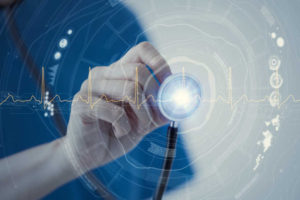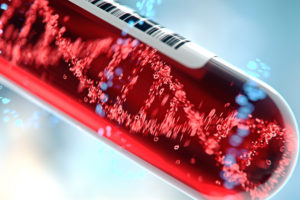Fever Overview
A fever is a raising of the body temperature above the normal level and can be caused by many different reasons. While there are no strict rules, a fever is generally considered to be a temperature above 37.2oC in the morning or 37.8oC at other times of the day. When someone is suffering from a fever they are sometimes said to be ‘febrile’ (having or showing symptoms of fever).
Although fever can be a sign of illness, it is recognized to play an important role in fighting infections, and for this reason a slight fever does not necessarily need treatment. Most bacteria and viruses that cause infections in people thrive best at 37oC and raising the body’s temperature above this helps fight them off. Most fevers are caused by infections, usually viruses.
Parents often fear that having a fever will cause brain damage in their child. However this rarely occurs unless the fever is dangerously high. Sometimes a fever can trigger a seizure in a child, in what is known as a febrile convulsion (febrile seizure). While this is not dangerous by itself, and does not result in any brain damage, it is important to bring the child to see a doctor every time one occurs so they can try and work out the underlying cause of the fever.
When there is ongoing fever of over 38oC, lasting for 3 weeks or more, without an obvious cause, this is called a fever of unknown origin, and this is diagnosed separately.

The Reason for a Fever
For the body to keep functioning, it must be kept within a fairly small range of temperatures. This is regulated by a region of the brain known as the hypothalamus. The hypothalamus collects information from all over the body about temperature, and can adjust the heat being produced and being lost so that it stays remarkably stable throughout the day. Sometimes though, the level that the hypothalamus sets this stable temperature at is raised a little higher than usual. It does this through stimulation by the bacteria and viruses themselves, as well as some chemicals called cytokines, released into the blood by cells of the immune system. This is most commonly done to try and fight off infections.
Infections are most commonly invasions of the body by bacteria or viruses, and if left unchecked they can do massive amounts of damage. It is up to the body’s immune system to fight off these infectious agents and one of the methods that the immune system uses is a fever. Bacteria and viruses can survive within a very small range of temperatures, and so by raising the body’s temperature, they cannot grow as fast and can be destroyed faster. In addition, a fever activates the body’s acquired immune system to make more white blood cells, antibodies, and other infection-fighting agents.
Sometimes the body can be fooled into raising its temperature for other, non-infectious reasons either because the immune system is fighting off something it things is foreign like a drug, or has become confused and is trying to attack some of the body’s own systems such as in as rheumatoid arthritis disease or Systemic Lupus Erythematosus (SLE) which are both autoimmune diseases.
Normally, the body keeps the temperature (measured using an oral thermometer) between 36oC and 37.2oC. However, this varies with the time of day, being coolest in the morning and warmest in the afternoon. A woman’s menstrual cycle can elevate temperature by one degree or more. It can also be raised by physical activity, strong emotion, eating, heavy clothing, medications, high room temperature, and high humidity. This is specially true in children
Measuring a Fever
The most accurate and convenient way to measure the body’s temperature is still with the use of an oral thermometer. Rectal measurements are sometimes made in children under four, but keep in mind that these are usually about 0.4oC warmer than if taken within the mouth. This is thought to be due to the cooling effect of breathing. Thermometers that take the temperature from the ear drum are much more convenient, but less accurate, than mercury oral thermometers.
Causes of a Fever
Fever can be caused by a wide variety of diseases, including:
Infections, such as:
- Colds or Flu
- Ear infection
- Sore throat and strep throat
- Bacterial Gastroenteritis or Viral Gastroenteritis
- Glandular Fever (mostly effecting young adults and teenagers)
- Urinary Tract Infections
- Upper respiratory infections such as laryngitis, pharyngitis or tonsillitis.
- Other serious infection including appendicitis, meningitis, pneumonia and tuberculosis
Following medications can also cause fever such as:
- Antibiotics
- Antihistamines
- Barbiturates
- Drugs used for lowering the Blood Pressure
- Cancer
- AIDS and HIV infection
- Autoimmune diseases in which the immune system attack the body
- Inflammatory Bowel Disease
If a fever has been going on for a particularly long time without being properly diagnosed or not being able to find the cause of it, then it is described as a fever of unknown origin.
Diagnosis of Fever
Infections are the most common cause of fever if it has been present for only a few days. If fever lasts longer than that, tests may be needed to find the cause. Your doctor will ask questions regarding the fever, and perform a physical examination, which may include a detailed examination of the skin, eyes, ears, nose, throat, neck, chest, and abdomen to look for the cause of the fever.
Depending on the findings from questions and examination, certain investigations and diagnostic tests may be needed. These diagnostic tests may include the following:
- Blood Tests to check levels of white cells, inflammatory markers and to check if there are infectious organisms in the blood stream.
- Urine sample analysis
- Stool cultures
- Chest X-ray
- CT, MRI, Ultrasound
- Special tests for unusual infections such as tuberculosis or HIV
- Diagnostic tests for autoimmune disease
Treatment for a Fever
Treatment depends on the duration and causes of the fever, and on other accompanying symptoms. For instance if an infection is the cause of the fever, this will be treated with antibiotics. If the fever is mild and no other problems are present, no medical treatment might be required. If the fever is making you feel too uncomfortable, then Tylenol or Advil (2 tablets, every 6 hours for adults) can be taken as needed. This will not treat the cause of the fever, but it can help lower the body’s temperature and make you feel more comfortable.
General advice for patients with fever include:
- Drink a lot of fluids
- Remove excess clothing or blankets, keep he environment comfortable and cool.
- A lukewarm bath or sponge bath may help cool someone with a fever
- Do not use cold baths or alcohol rubs. These will make the skin cool, which often make the situation worse by causing shivering, which raises the core body temperature.
- Take Tylenol as needed.
- Do not give aspirin to children, use Tylenol instead.
Taking medication to lower a fever can cause the infection to last a little longer. As described earlier, the fever is actually a way of fighting off the infection, and this is being taken away by the medication. Despite this, infections do not last much longer at all if the body temperature is kept low with Tylenol. Most of the time however, people prefer to be comfortable and non-feverish for a tiny bit longer than uncomfortable, hot and unwell for a very slightly shorter illness.

Bay Biosciences is a global leader in providing researchers with high quality, clinical grade, fully characterized human tissue samples, bio-specimens and human bio-fluid collections from cancer (tumor) tissue, cancer serum, cancer plasma cancer PBMC and human tissue samples from most other therapeutic areas and diseases.
Bay Biosciences maintains and manages it’s own bio-repository, human tissue bank (biobank) consisting of thousands of diseased samples (specimens) and from normal healthy donors available in all formats and types. Our biobank procures and stores fully consented, deidentified and institutional review boards (IRB) approved human tissue samples and matched controls.
All our human human tissue collections, human specimens and human bio-fluids are provided with detailed samples associated patient’s clinical data. This critical patient’s clinical data includes information relating to their past and current disease, treatment history, lifestyle choices, biomarkers and genetic information. Patient’s data is extremely valuable for researchers and is used to help identify new effective treatments (drug discovery & development) in oncology, other therapeutic areas and diseases. This clinical information is critical to demonstrate their impact, monitor the safety of medicines, testing & diagnostics, and generate new knowledge about the causes of disease and illness.
Bay Biosciences banks wide variety of human tissue samples and biological samples including cryogenically preserved -80°C, fresh, fresh frozen tissue samples, tumor tissue samples, FFPE’s, tissue slides, with matching human bio-fluids, whole blood and blood derived products such as serum, plasma and PBMC’s.
Bay Biosciences specializes in collecting and providing human tissue samples according to the researchers specified requirements and customized, tailor made collection protocols. Please contact us anytime to discuss your special research projects and customized human tissue sample requirements.
Bay Biosciences provides human tissue samples (human specimens) from diseased and normal healthy donors; including peripheral whole-blood, amniotic fluid, bronchoalveolar lavage fluid (BAL), sputum, pleural effusion, cerebrospinal fluid (CSF), serum (sera), plasma, peripheral blood mononuclear cells (PBMC’s), saliva, Buffy coat, urine, stool samples, aqueous humor, vitreous humor, kidney stones, renal calculi, nephrolithiasis, urolithiasis and other bodily fluids from most diseases including cancer. We can also procure most human bio-specimens and can do special collections and requests of human samples that are difficult to find. All our human tissue samples are procured through IRB approved clinical protocols and procedures.
In addition to the standard processing protocols Bay Biosciences can also provide human plasma, serum, PBMC bio-fluid samples using custom processing protocols, you can buy donor specific sample collections in higher volumes and specified sample aliquoting from us. Bay Biosciences also provides human samples from normal healthy donors, volunteers, for controls and clinical research, contact us Now.
日本のお客様は、ベイバイオサイエンスジャパンBay Biosciences Japanまたはhttp://baybiosciences-jp.com/contact/までご連絡ください。

